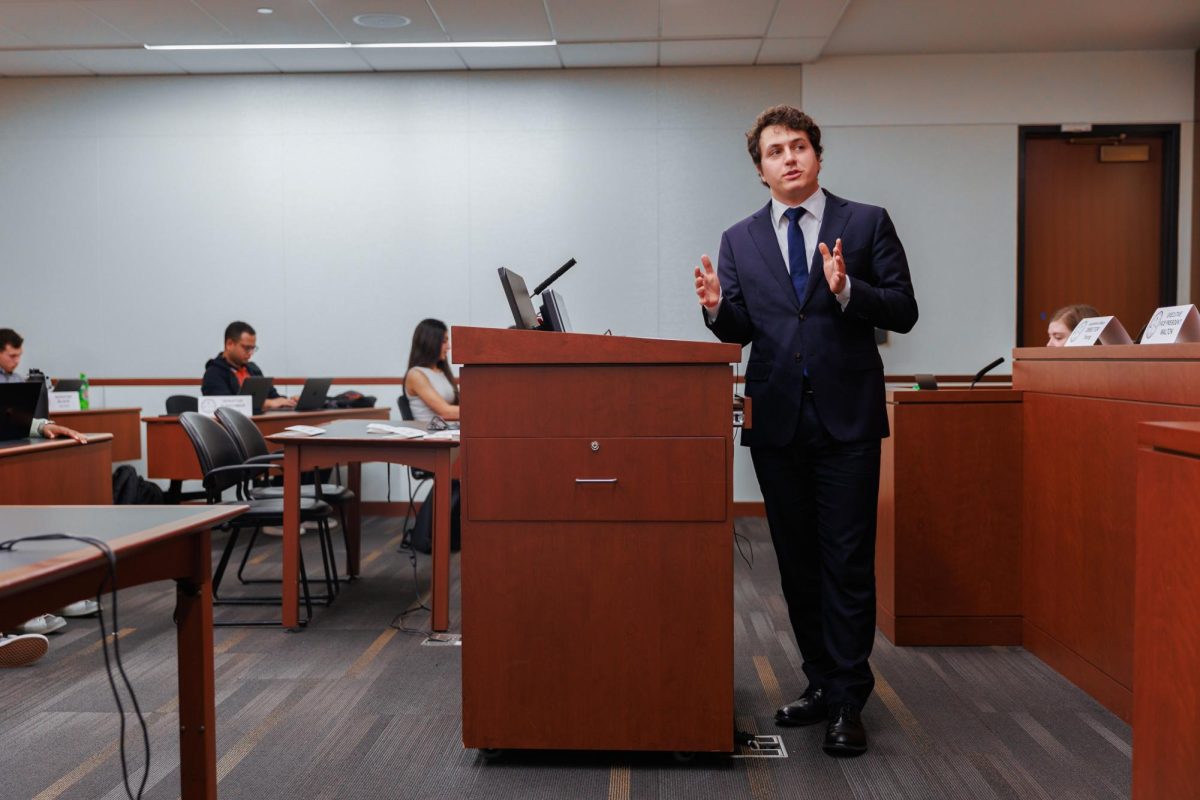Gelman Library’s first budget increase in 10 years wasn’t enough for GW to expand its collections, the University’s head librarian said last week.
The about $300,000 boost to the library – one of just three areas across the University to see an increase – only covered the cost of inflation so Gelman didn’t have to cut any subscriptions this year.
University Librarian Geneva Henry said Gelman traded some subscription services for others, adding resources to one of the library’s most popular databases, but said the increase “didn’t allow us to go out and do a lot more.”
“Of course I asked for much more, but you know, also, I’m part of the University. I know. And the provost was very apologetic,” she said, citing a budget squeeze across GW.
Since the University had to cut back about $20 million from its budget this year, almost every department saw their own budgets shrink or stay the same. The library, University Counseling Center and Title IX coordinator’s office were the only areas to receive increases.
Provost Steven Lerman said he’d like to increase funding for the library again next year, and that the first boost came after a faculty committee urged him to do so as a way to improve GW’s library system.
“This is the first payment. It’s always hard to know what future budgets will look like, but if you ask me would I like to be able to increase the acquisitions budget, clearly the answer would be yes,” he said.
Like GW, college libraries across the country have had to find ways to cope as inflation and the cost of journal subscriptions have risen faster than most of their budgets have expanded.
And Martha Kyrillidou, the senior director of statistics and service quality programs at the Association of Research Libraries, said the costs of scientific journals have increased more rapidly than those in the humanities. As GW has made more hires in fields like public health and engineering, professors have relied more on subscriptions than in the past.
The amount of research and information published each year is increasing so quickly that it’s hard for libraries to keep up, she said.
“Research libraries will have to be more selective,” Kyrillidou said. “It is an information rich society. As a society we do have reasons to preserve the record for the future, but at the same time we have to be pragmatic.”
Libraries, including GW’s, have had to rely more on fundraising in the past decade to bring in new materials. That’s forced libraries to look for donors in new areas who perhaps haven’t made gifts before.
Ann Riley, the vice president of the Association of College and Research Libraries, said university libraries have relied more on donations to fund special collections and items only purchased once, such as books or DVDs, as their budgets for collections have covered less. But without a specific group of alumni, libraries can be at a disadvantage.
“We don’t have alumni of any programs, so we have both the benefit of being a place that all the students in the university may have used and have memory of, but we don’t have a specific constituency to go after,” she said.
GW’s library system spent about $26 million and was ranked No. 53 in the country by the Association of Research Libraries two years ago. The University dropped after two years at the No. 47 spot.
For years Gelman has faced criticism for having too few resources to be considered a top research library. Two years ago, outside consultants said Gelman was underserved in terms of both staff and research materials.
Their visit was part of a year-long review by GW that found the library needed more interdisciplinary resources and additional upgrades. The findings came months after the University completed renovations to the second floor.
To diversify the types of collections inside the library, Henry said she and another head librarian at one of GW’s local peers are looking to pilot a program that would have different libraries within the Washington Research Libraries Consortium focus on collections in particular subjects, which students and faculty across institutions could share.
If the consortium moves forward with the program, each library would develop in one particular area. That would allow GW to focus on improving its interdisciplinary resources as it focuses overall on collaboration across departments for research and teaching.
“That will actually free up some of our funding – if we can do that successfully – to fund some of these new initiatives, like the cross-disciplinary initiatives,” Henry said.
Henry said such a program had just been floated within the last month, and the idea is still in an early phase.
But a partnership could negatively affect libraries’ national rankings, she said. Schools would purchase fewer collections overall, while the Association of Research Libraries evaluates individual colleges based on how many volumes each holds.
Michael Levine-Clark, a professor and associate dean for scholarly communication and collection services at the University of Denver libraries, said consortiums can help libraries when negotiating prices for collections because they will often go through that process as an organization, rather than as individual units.
But sharing materials is more difficult when faculty and students want certain materials on their own campuses.
“It’s easy to cooperate when what you’re doing is negotiate as a group and pay less money for something you all went,” he said. “It’s been a lot harder to collaborate on print resources.”
Rising subscription costs have also forced libraries to cut back on single-purchase items, Levine-Clark said. While universities used to spend about 40 percent of their annual collections budget on resources they purchased one time, he said that number has dropped to about 20 percent.
“The sad reality is the thing that has suffered the most is the budget for books. What we spend on books goes down every year and the number of books we can buy goes down,” he said.







